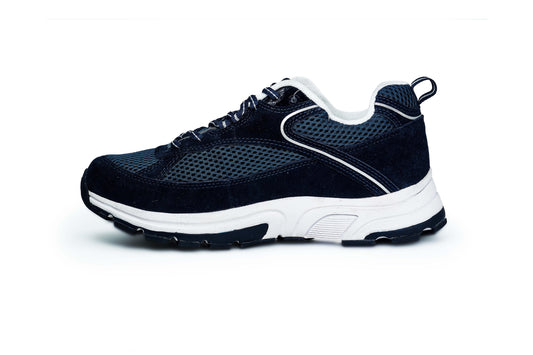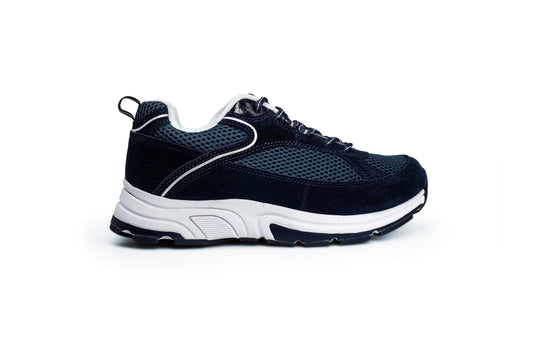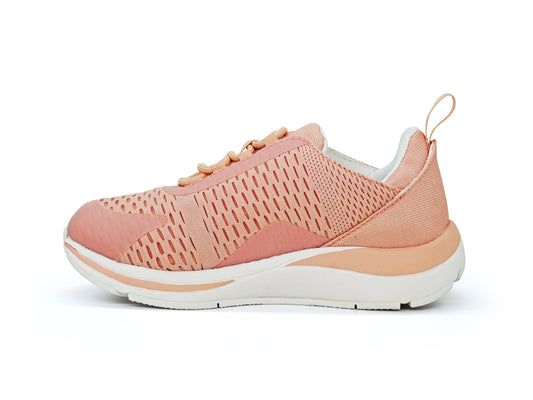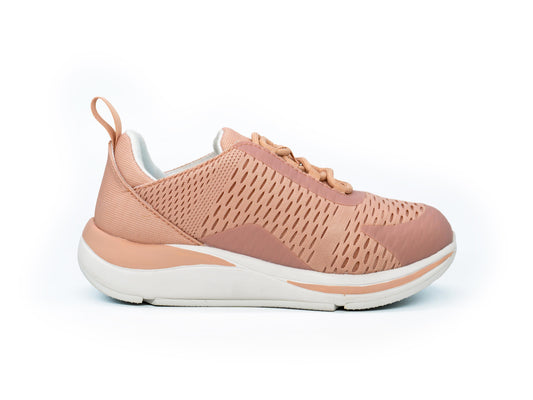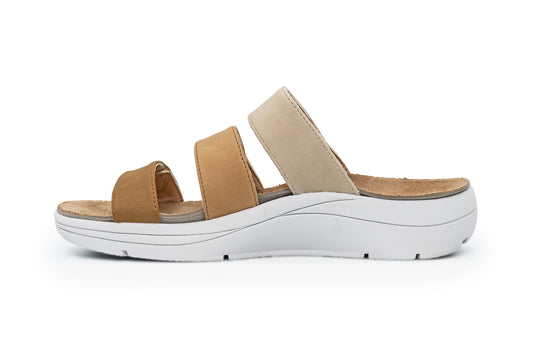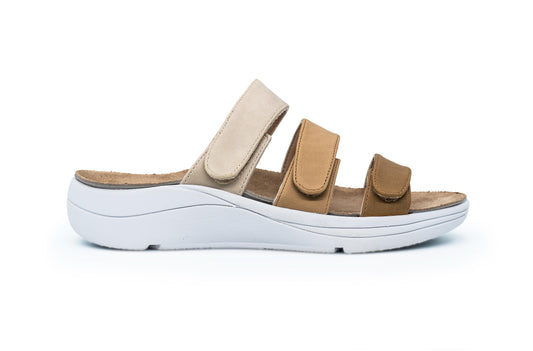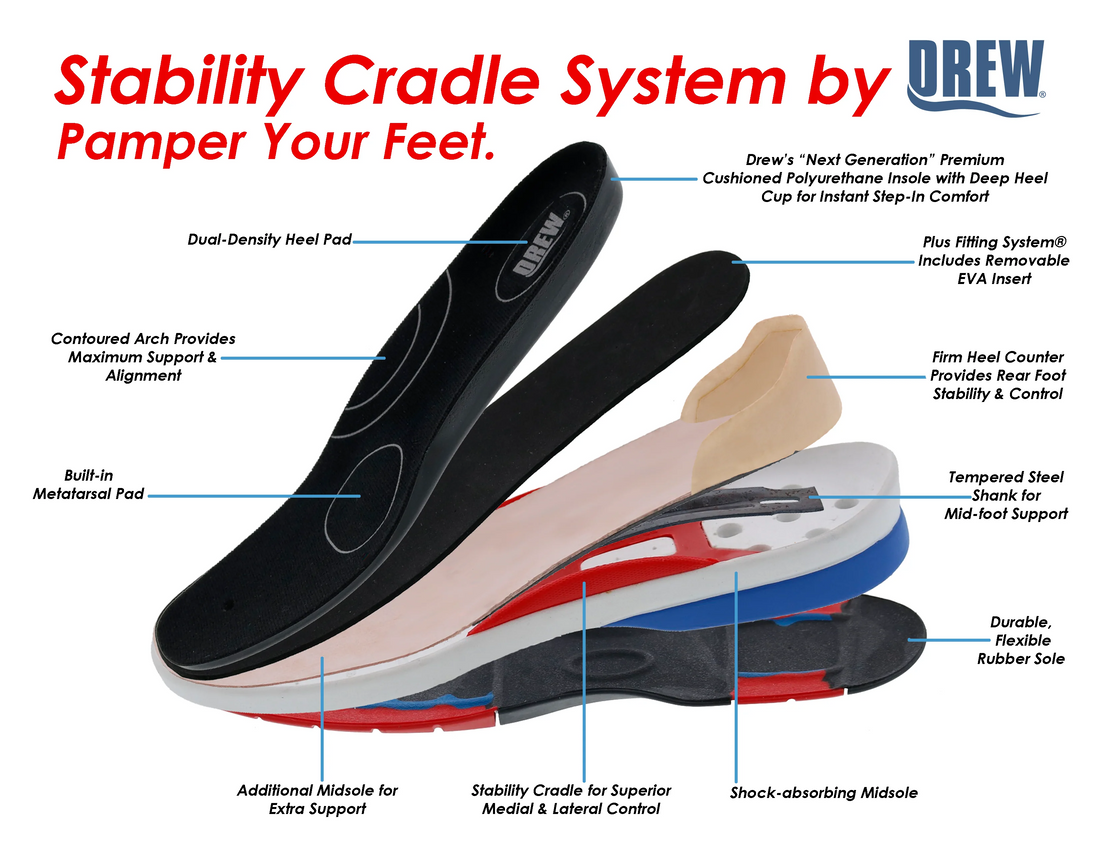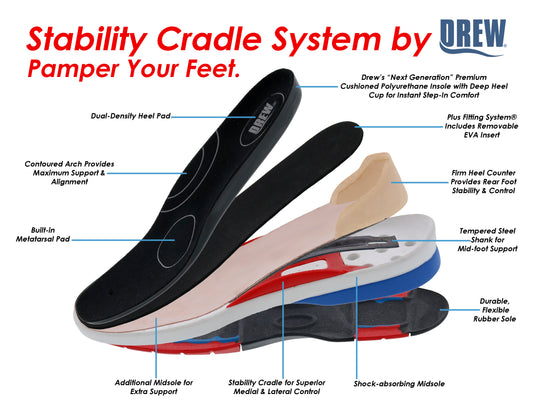THE SCIENCE BEHIND ORTHOPEDIC SHOES: HOW THEY PROMOTE FOOT HEALTH
Overall health is often related to foot health, which generally is an unnoticed aspect of everyday comfort and movement. As a person ages, or due to certain medical conditions, the general health of a person's feet can deteriorate, causing some form of pain or discomfort in the feet and, in many cases, much more serious ailments such as damage to the joint or deformity. This is where orthopedic shoes have a role.
Orthopedic shoes are designed to offer extra support, alignment, and comfort, which helps to alleviate pain caused by various foot problems. But how do they work? To better understand their effectiveness, it's essential to examine the science behind orthopedic shoes—how they work, the features they incorporate, and the different ways they help maintain or improve foot health
Anatomy of the foot and the need for orthopedic support
The human foot is a rather intricate structure of 26 bones, 33 joints, and more than 100 muscles, tendons, and ligaments. Together, these parts coordinate to provide stability, movement, and weight distribution. However, when any part of the foot is out of alignment or overstretched, discomfort and pain may arise. Conditions such as plantar fasciitis, flat feet, bunions, arthritis, or general foot fatigue result from poor alignment, improper support, or inadequate cushioning.
Orthopedic shoes address these issues by incorporating features that support the foot’s natural biomechanics, reducing strain and preventing further discomfort. They help correct misalignment, distribute pressure evenly, and absorb shock, ensuring better foot health
Arch support: the foundation of foot health
One of the most important features of orthopedic shoes is arch support. The arches of the feet are designed to absorb shock and aid in weight distribution. However, when the arches collapse or fail to provide proper support (a condition known as fallen arches or flat feet), it can lead to problems such as foot pain, shin splints, knee pain, and even lower back pain.
Orthopedic shoes come with built-in arch support that helps maintain the foot’s natural curvature, ensuring even weight distribution and reducing tension on the arch, ligaments, and tendons. For individuals with high arches, orthopedic shoes provide extra cushioning to prevent discomfort and excessive strain.
Cushioning and shock absorption
Our feet endure repeated impact when walking, running, or standing. Over time, this constant pressure can lead to injuries or worsen existing foot conditions. Orthopedic shoes incorporate special materials such as:
✔ EVA foam
✔ Gel inserts
✔ Memory foam
These materials provide shock absorption, reducing the stress on joints and muscles. Cushioning also protects sensitive areas like the heel and ball of the foot. This feature is particularly beneficial for individuals with plantar fasciitis, arthritis, or joint pain, as it helps minimize the harsh impact of walking.
Correct posture and alignment
Improper foot alignment can create a domino effect on the entire body. Poor posture often begins with misaligned feet, leading to discomfort in the knees, hips, and lower back.
Orthopedic shoes help correct alignment with features like:
✔ Angled soles for improved stability
✔ Firm heel cups to keep the foot properly positioned
✔ Supportive structures that encourage a natural walking motion
For individuals with overpronation (inward foot rolling) or supination (outward rolling), orthopedic shoes help correct these movements, ensuring better posture and long-term health.
Wide toe boxes and foot space
Wearing shoes that squeeze the toes together is one of the leading causes of foot pain and deformities, including:
✔ Bunions – Painful lumps at the base of the big toe
✔ Hammertoes – Bent toes caused by cramped footwear
✔ Blisters and calluses – Resulting from excessive friction
Orthopedic shoes feature a roomier toe box, allowing the toes to spread naturally and reducing unnecessary pressure. This design is particularly beneficial for individuals with swollen feet (common in diabetes and arthritis).
Firm non-slip soles for stability
Stability is a crucial aspect of foot health, especially for individuals at risk of falls or those with balance-related conditions. Orthopedic shoes often have:
✔ Firm, non-slip soles made from rubber for better grip
✔ Shock-absorbing midsoles for stability on uneven surfaces
✔ Supportive bases to prevent slips and falls
For individuals with arthritis, neuropathy, or other balance issues, these features enhance stability, helping them walk confidently and securely.
Pain reduction for a chronic condition
Chronic foot conditions such as plantar fasciitis, arthritis, and diabetic neuropathy can cause severe pain and discomfort. Orthopedic shoes are specifically designed to alleviate these conditions with features like:
✔ Heel cups and arch support to reduce inflammation in plantar fasciitis
✔ Extra cushioning to protect diabetic feet from sores and blisters
✔ Shock absorption to ease arthritis-related joint pain
By offering a supportive and protective environment, orthopedic shoes prevent complications and enhance overall foot health.
The Science Behind Orthopedic Shoes
The science behind orthopedic shoes lies in their design and functionality, focusing on:
✔ Arch support
✔ Cushioning and shock absorption
✔ Proper alignment and stability
These features help alleviate pain, prevent injuries, and promote better posture. Whether you suffer from a chronic condition or simply seek extra comfort, orthopedic footwear offers a science-backed solution to keep your feet healthy and pain-free.
Take the Next Step Towards Comfort and Care
Discover the perfect balance of support, style, and expert guidance for your feet. Explore our collection of orthopedic and diabetic shoes designed to keep you moving with ease.
Start your journey to happy, healthy feet today!
Visit us at DiabeticShoe for more tips, insights, and footwear solutions.
Stay Connected:
Follow us on Facebook, Instagram, YouTube, LinkedIn, Twitter, Pinterest, and Quora for updates, advice, and more informative content.

